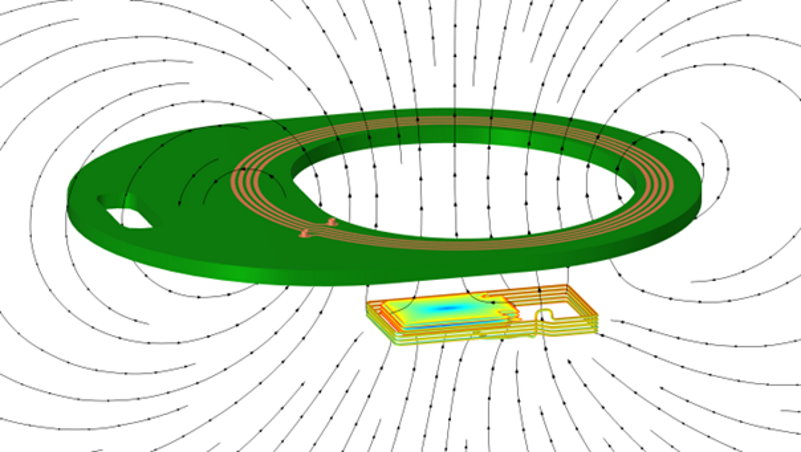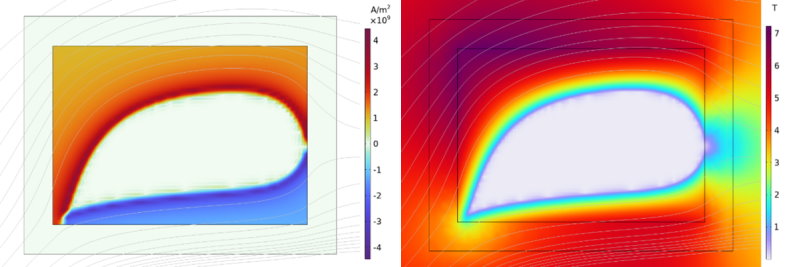
How multiphysical do you want it?
Product and system development are becoming increasingly simulation-driven. In the systems engineering process, simulation has grown into a full-fledged specialty used to answer specific design questions by making predictions about all kinds of phenomena. These range from heat transfer and fluid dynamics to structural mechanics, acoustics and vibrations, to electromagnetism and plasma or nuclear physics. Simulation has thus become a tool for research, development and engineering.
The trick is to link the different physical phenomena to each other and do calculations about them simultaneously because they often influence each other. Consider thermal phenomena that lead to mechanical deformations, or heat dissipation due to electrical currents that are in turn influenced by rising temperatures. A good example from high-tech mechatronics are the electromagnetic actuators that must deliver performance in terms of accuracy, speed and acceleration.
Actuator design
We encounter such specific requirements that it may make sense to design the actuator – a combination of coil and permanent magnet – specifically for the application. The maximum (Lorentz) force that can be delivered is closely related to the thermal limit; the actuator mustn’t become too hot. That’s why we want to calculate the heat transport in the coil. The challenge here lies in the anisotropy: heat flows much more easily along the coil wires than perpendicular to them. The reason is that copper is a good heat conductor while electrical insulation and potting have a high thermal resistance.
We can easily set up such a simulation problem in Comsol: we can link the different limits we have to keep an eye on, for current, voltage, temperature and sometimes also mass. In addition, we can define a coordinate system that follows the coil wire, allowing us to smoothly calculate and quickly evaluate different designs to optimize actuator performance.
With increasing system requirements, such an actuator does indeed reach limits. The temperature in the coil is proportional to the power, ie the product of current squared and electrical resistance. This resistance also increases with temperature. So, temperature scales more than quadratically with current, while actuator force is linearly proportional to current. With further temperature increases, we gain less and less extra power. Even if we want to squeeze the most out of a design, there’s not much point in going higher than about 100 °C.

Superconductivity
To escape this dead end toward higher temperature and power, people are currently looking to superconductivity. A coil made of superconducting wire has zero resistance (if the current doesn’t change), which limits heat dissipation and hardly increases the temperature. This allows a much larger current to be driven through the coil, which consequently generates a much larger force. That’s why permanent magnets in electric motors are replaced by superconducting coils. Thanks to superconductivity, we get actuators that deliver higher power with higher efficiency. We can calculate this physics in Comsol as well. Note that with varying currents, losses also still occur in a superconductor.
Of course, we do get some ‘hassle’ in return, such as cryostats and associated cooling installations, but that doesn’t seem to be an obstacle for various applications. Examples include nuclear fusion concepts with magnetic confinement and particle accelerators. But superconducting motors are also being looked at for less exotic applications such as electric aircraft. In the Ecoswing project, a wind turbine has already been equipped with a superconducting generator. In such applications, surprisingly enough, the superconducting coil is often located on the rotor and not on the solid world.
We’re currently working on two superconductor applications: an actuator and a nuclear fusion concept. We use Comsol, for example, to calculate losses in the superconductors.

Wireless power transfer
Heat dissipation also deserves attention in smaller applications. Think of an implantable sensor that can subcutaneously monitor the blood sugar levels and other variables in a patient. The battery of this sensor must be charged every day via wireless power transfer. The patient then wears a strap that must place the transmitter coil (also with battery, so that the patient doesn’t have to be connected to the mains) exactly above the sensor with receiver coil. Naturally, we want charging to be quick and efficient.
The complication is that the sensor battery itself also interacts with the magnetic field lines. Currents will start to flow in the battery’s metal foils, which causes dissipation and raises the temperature. Ultimately, this reduces the mutual inductance and thereby the efficiency of the power transfer. The electrical properties of the intervening skin tissue influence this as well. Comsol has tissue characteristics in its materials library, but it may still take some research to model the specific structure of skin layers.
This was a nice multiphysics problem for us, with the ultimate goal of finding an optimal coil design for fast and efficient power transfer. The challenge was to avoid heating the battery more than charging it. Therefore, we were given a maximum temperature increase of 2 °C in the surrounding tissue as a boundary condition.
In addition, the coupling with the sensor’s electronic circuit wasn’t linear. That made the problem even more complex. To tackle this, we determined lumped parameters from the Comsol simulations, which we then entered into LTspice for the network analysis.
Shortest path
When engaged like this, it’s tempting to get completely lost in the details. This sometimes may create the impression that simulations are only necessary to answer very detailed questions about the system design. But does this really help the customer? Especially then, it makes sense to zoom out: what are you actually doing? Sometimes we may come to insights that allow us to make much faster progress.
We still often need simulations, in which case it’s important to ask ourselves in advance what exactly we want to know, what we’re going to do with the answer and how we can calculate it as easily as possible. A simulation is usually aimed at one specific outcome and there’s little point in refining all kinds of details that have little influence on it. The trick is to find the shortest path from problem to solution. That’s a puzzle in itself, but one that makes engineers happy.





